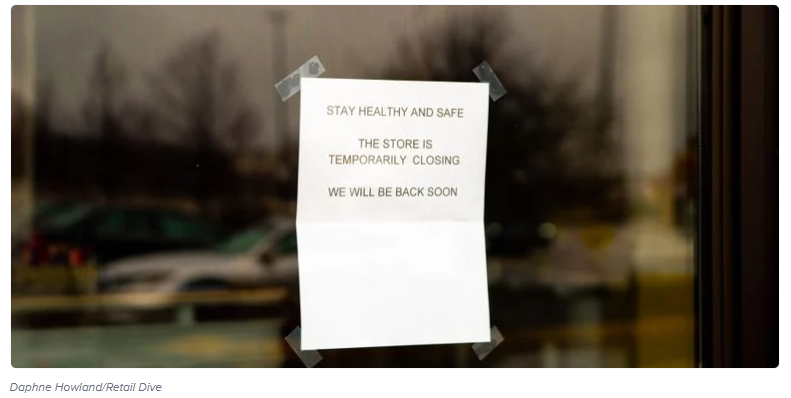
By Ben Unglesbee via Retail Dive
Dive Brief:
- The share of small retail businesses that couldn’t make rent rose to 34% in April, up six percentage points from February, according to survey data from Alignable.
- Those surveyed cited inflation, including gas price spikes, supply chain issues, labor shortages, reduced revenues and increasing rent. Of those small businesses surveyed by Alginable, 46% said their rent was higher than six months ago.
- Trouble making rent varied from state to state. Across all industries, New Jersey, Illinois and Maryland had the largest share of small businesses that couldn’t pay. Other states, including New York and Texas, saw improvement in businesses’ ability to pay.
Dive Insight:
The financial and operational challenges posed by the pandemic have not been felt in equal measure by retailers. The largest companies with the deepest pockets have by and large fared better than their smaller counterparts.
Indeed, many of the largest retailers have enjoyed record sales and profits despite social distancing, supply chain bottlenecks and a host of other disruptions over the past two years.
During the most difficult days of the pandemic for retailers, when stores were closed, or had opened but still suffered significant traffic and revenue declines, cash was critical to survival. Large retailers quite simply had more cash on hand from their business as well as easy access to cheap capital from the financial markets.
When demand surged last year before global supply chains had the chance to catch up, creating bottlenecks throughout the world, the largest players could absorb increased ocean freight rates and could pay to charter their own ships or shell out for air freight.
Walmart, for example, paid $400 million in unanticipated supply chain costs in the fourth quarter last year. That is more than the revenue of hundreds of small retailers combined. And yet the company still posted sales increases and healthy operating profits. Smaller players typically have less money and less leverage with suppliers and carriers than the largest retail chains do. Lost sales from out-of-stocks can then become a financial crisis for some.
Throughout the pandemic, rent has determined the fates of both retailers and landlords. All around the country, tenants and their landlords renegotiated leases, payments and the broader contours of their relationships. Rent demands drove some retailers into bankruptcy, while unpaid rent drove some landlords and mall operators to file as well.
Resounding rebounds of foot traffic and sales in 2021 have given landlords more leverage to raise rents. Tussles over leases are still driving some retailers out of their locations. According to Alignable survey data, 7% of small businesses said their landlords were planning to raise their rents soon.
While the overall delinquency rates for small retailers represent a setback, more minority-owned small businesses were able to pay rent in April than February, according to Alignable.


